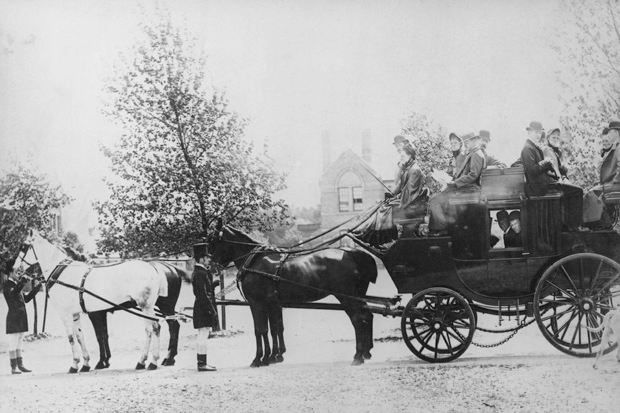‘The only use of a gentleman in travelling,’ Emmeline Lowe wrote in 1857, ‘is to take care of the luggage.’ My sentiments entirely. The extract from Unprotected Females in Norway reprinted in this book recounts Lowe’s travels with her mother round the Dovrefjeld in the centre of the long country. Tramping through the valleys wearing mosquito veils, ‘solid plaid skirts’ and hobnail shoes, the pair reckoned that the only essentials were a driving whip and a fishing rod.
Lowe (who published anonymously) is a spirited companion on the verdant plains and the snowy peaks, and her pleasure in the long boreal gloaming leaps infectiously from the page. She and Mother dine observed by a circle of spectators, climb ladders to bed and keep their calm when one coach driver turns out to be — or so she says — five years old. Like all good writers, Lowe understands that specificity is the key — a breakfast involves a communal bowl of porridge and another of cream, ‘each [person] dipping his spoon in succession into the first one, then the other’. Despite the outdated terminology (‘My peasant was most chatty’), Lowe is gracious, and no little Englander. She writes:
We felt that deep confidence in the people established, which never for a moment forsook us during the whole of our journey; and which would have made us follow a Norwegian guide round the world, had he known the way.
This slim volume is one of a series — ‘Found on the Shelves’ — of extracts from the stacks of the London Library, an institution which celebrates its 175th anniversary this year. I have spent some of the happiest days of my life idling in the topography collection, but it’s a time-consuming business, and so it’s an inspired idea to let a publisher do the spadework. The book is judiciously edited, with helpful notes.
The Lure of the North contains two other pieces, one from the rare pamphlet A Cruise on the Hardanger Fiord by Edward Stanford Jr (also published anonymously), in which the 25-year-old (later to take over the family bookselling business, still thriving today) sets off for Norway in 1881 with five companions and a four-oared double-ended whaling gig of their own design, built of pine and mahogany and called Snark. They camp, sing songs round the fire to a banjo, admire the girls and walk 50 miles each way to the Sogne Fjord. And what a time they had, not least because, as Stanford observes gratefully, ‘In Norway life is not regulated on our English catch-a-train principles.’
William Dawson Hooker completes the trio of authors with Notes on Norway, the journal of a summer tour in the north of that country in 1836. The son of the famous botanist, he was a 20-year-old trainee doctor, bursting with enthusiasm for birds, adventure and life itself. Hooker dances with Mountain Lapps, shoots duck, falls into a fjord and describes each day’s exploits with affection, humour and charm, illustrating his words with sketches that are reproduced here. All three of the writers in this book have a keen eye for, and appreciation of, the landscape. It is an uplifting volume.
Other titles in this innovative series include On Reading, Writing and Living with Books, by a cast including Dickens and Woolf, and On Corpulence: Feeding the Body and Feeding the Mind, by the undertaker William Banting. But The Lure of the North is my favourite. It makes one wistful for those days of innocent discovery. But they haven’t really disappeared, have they?






Comments